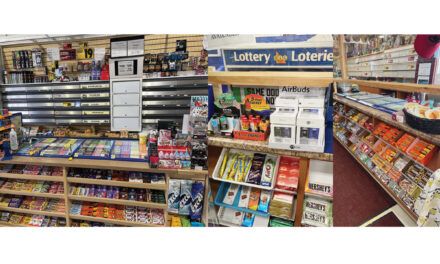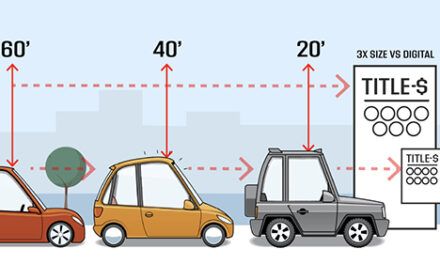
Trends That Will Drive Canadian C-Stores in a Crisis

Trends That Will Drive Canadian C-Stores in a Crisis
By Drew Mize
When it comes to getting supplies while adhering to a stay-at-home mandate, consumers are relying on many different places to shop, not just grocery stores or big box stores. Now, more than ever, convenience stores are the go-to place for consumers to buy their necessary items.
In Canada specifically, 7,700 convenience stores serve about 10 million people who visit c-stores across the nation every day. About 58 per cent of prepared food bought by Canadians is grab-and-go cuisine. That same type of food is typically sold in c-stores. Whether it’s prepared foods or multi-pack items, consumers are frequenting c-stores shopping for items that will make everyday life easier, especially now since COVID-19 has changed so much for so many. For the Canadian marketplace, tools that provide consumer trip and basket-level data and analysis to deliver what consumers want and need during this pandemic are increasingly important.
Recent data from the National Association of Convenience Stores (NACS), an international trade association representing more than 2,100 retail and 1,600 supplier company members, states that before the pandemic, foodservice was the convenience store industry’s rising star, with a 4.4 per cent increase in in-store sales.
New data suggests that in 2020, direct store operating expenses may rise as retailers incur costs related to deep cleaning and sanitation as well as new safety measures like investing in personal protective equipment (PPE) and curbside pickup services. We could also see a reduction in other expenses such as less energy being used because of a decrease in store hours and equipment (i.e. coffee pots), and less fill-ups at the pump.
With all this data in front of us, how are retailers adapting? Can real-time data insights help stave off disaster? And, what are the key trends that will impact c-store foodservice operations this year as Canadians seek out convenience, speed, and safety during the pandemic? Here are a few trends we think we will see in 2020.
Delivery and curbside pickup will transform the convenience retail industry
In Canada, the food delivery business is worth $4.3 billion (and growing). C-stores should seriously consider food delivery as another revenue-generating component of your foodservice. If you’re exploring such a possibility, take a look at Circle K and other convenience retailers that have started using delivery services. Testing the viability of delivery through third-party services instead of building your own service from scratch, which would be a significant investment, is a good way to start.
Many c-stores are adapting their strategies right now to serve customers and shape the customer experience to cope with what they face today amidst COVID-19 and prepare for what comes next. Several operations have added mobile ordering and curbside pickup to comply with social distancing regulations, such as from Vroom Delivery. It supports c-stores and helps them serve their communities during this global crisis, giving retailers a much-needed solution to help fight this pandemic and give customers a safe alternative for buying essentials.
Managing inventory and product placement
The right solution will help facilitate inventory management by breaking down items into individual components, so stores know exactly what it takes to plan food preparation and avoid spoilage and waste. In addition to adapting their foodservice model, c-stores are also adapting their in-store merchandise strategies to mitigate the losses they’re seeing in other areas such as fuel (fuel is down around 35 per cent year-over-year).
C-stores are also focusing on product placement in the store. Why? Basket-level spend is up nearly 14 per cent year-over-year because people are now stocking up and purchasing more and larger pack sizes per trip to prevent potential exposure. So, since retailers know people are making fewer trips (down nearly 30 per cent year-over-year) but are purchasing more with each trip, some c-stores are moving large package items (i.e. bulk size) towards the front of the store.
Workforce Optimization
It is difficult to rely on historical data right now to optimize your workforce. However, insight into your sales, and how customers are purchasing right now can help c-stores take into account point-of-sale, workforce scheduling, and other data to help you decide how many employees you need to make food and serve customers at any given time.
Systems should be able to help tailor a workforce schedule based on transaction-level data, too. According to NACS, in 2019, overall, wage expenses increased 7.2 per cent, and hourly wages for full-time employees reached $11.75 per hour and $10.83 per hour for part-time. These figures are expected to increase even further in 2020 as many convenience retailers announce hourly wage increases and bonus pay for frontline employees during the coronavirus pandemic. Also, the workforce might shift its focus, helping to deliver foods or essentials, working on curbside delivery, stocking inventory or even working early shifts due to store operation time changes.
There are still a lot of unknowns as we move through 2020 and into 2021, and there is no modeling or historic data that can provide us with a crystal ball about the future right now. But, we can certainly take the real-time data and initiatives we are implementing now to create a new set of data tools to address our current situation and new reality.
Drew Mize serves as executive vice president and general manager of ERP Solutions at PDI. He oversees global product management for all retail and wholesale solutions, portfolio convergence and hardware technology. Prior to PDI, Drew was with Pinnacle for 11 years, serving multiple roles and was president at the time of PDI’s acquisition. Before Pinnacle, Drew was vice president of TMI Services, Inc. of Fort Worth, TX for 10 years, where he led the convenience store technology division. He earned his B.B.A. degree in marketing from the University of Texas at Arlington.


































